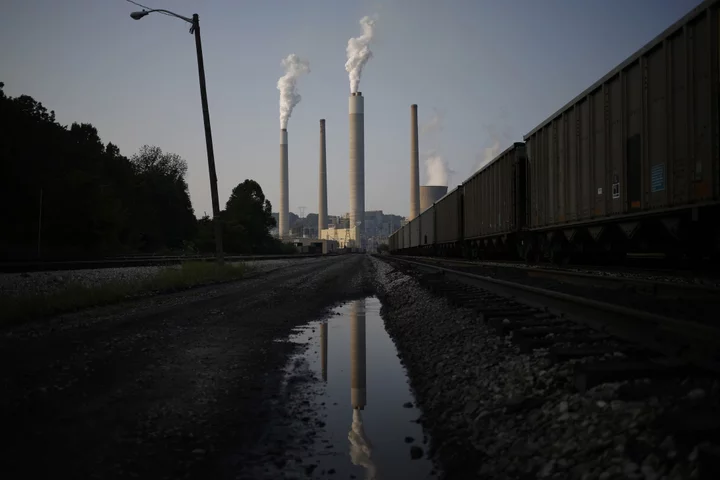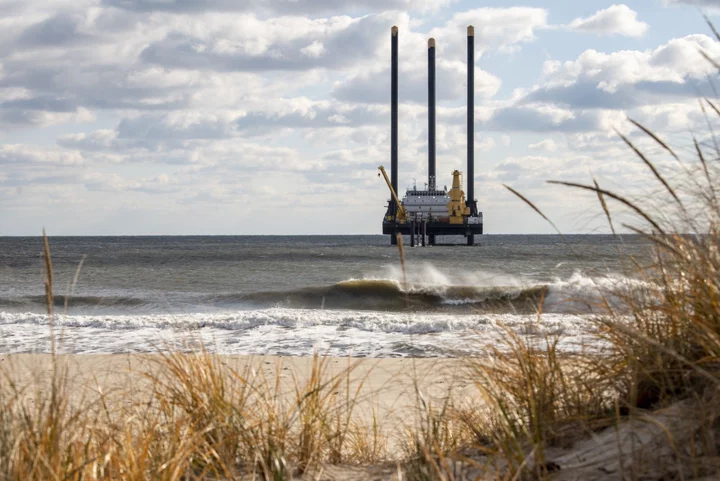The Biden administration’s latest plan to slash planet-warming pollution gives electric utilities years to clean up US coal and natural gas plants — but it would still force them to pick up their current pace.
The proposal would drive dramatic changes across the electric sector, spurring early closures of some coal- and gas-fired plants while hastening the industry’s embrace of renewable power. But regulators softened the immediate impact by focusing on the largest emitters while ignoring plants critical to meeting demand spikes.
The Environmental Protection Agency “has tried to build in flexibility for compliance” in tailoring the requirements for different types of power plants, said Elyse Steiner, a principal analyst at Wood Mackenzie.
Even so, some analysts and industry advocates warned stringent requirements starting in 2032 could challenge the grid as more Americans replace gasoline-fueled cars and natural gas appliances with electric models.
“We are already facing a reliability crisis” with the early retirement of plants that can quickly dispatch electricity, said Todd Snitchler, head of the Electric Power Supply Association, adding the proposal would make matters worse.
The EPA outlined different timelines and options for utilities to fulfill proposed limits based on the fuel they use, how often they’re run and potential retirement dates. Coal-fired plants could keep operating until 2040 as long as they began burning 40% gas. Small- and medium- sized gas units operating less than half the time are ignored altogether.
Read More: Biden’s Grid Crackdown Shows How Tough His 2035 Goal Will Be
The agency’s previous attempts to stifle the sector’s greenhouse gas emissions had tighter timetables, said Christi Tezak, managing director of research firm ClearView Energy Partners.
The EPA proposed grandfathering in existing coal plants through 2032 and requiring modest changes for those that keep running longer — an approach that gives utilities more time to recoup investments in pollution-control equipment, said industry officials who asked not to be named because they didn’t have their employers’ approval to speak.
Companies also would have more time to recover recent spending on gas units before the proposal would compel them to adopt carbon-capture technology, burn more hydrogen or close. The harshest mandates on affected gas plants would begin to bite in 2035 and 2038.
Read More: New US Power Rules Spell Likely Death for the Last Coal Plants
Power utilities had lobbied the administration for flexible compliance options and an approach that could survive expected court challenges, after the EPA’s previous plans were invalidated. Utilities say they are already moving to cut greenhouse gases, with many setting goals to be carbon-neutral by mid-century.
The EPA envisions utilities complying with carbon capture and hydrogen, but analysts called high costs and infrastructure constraints a challenge. By 2038, affected gas units would have to capture 90% of their carbon dioxide emissions or substitute so-called green hydrogen made with zero-emission power for 96% of the fuel they burn.
Ryan Sweezey, a principal analyst at Wood Mackenzie, called the hydrogen timeline aggressive. “It’s not just a matter if there will be enough green hydrogen supply, it’s a matter if there is enough infrastructure to get this hydrogen to these plants.”
Still, states and utilities would have years to adjust their long-term planning, said Lissa Lynch, a senior attorney at the Natural Resources Defense Council. “This gives the certainty that they’re going to need.”
--With assistance from Josh Saul.
Author: Jennifer A. Dlouhy and Mark Chediak









